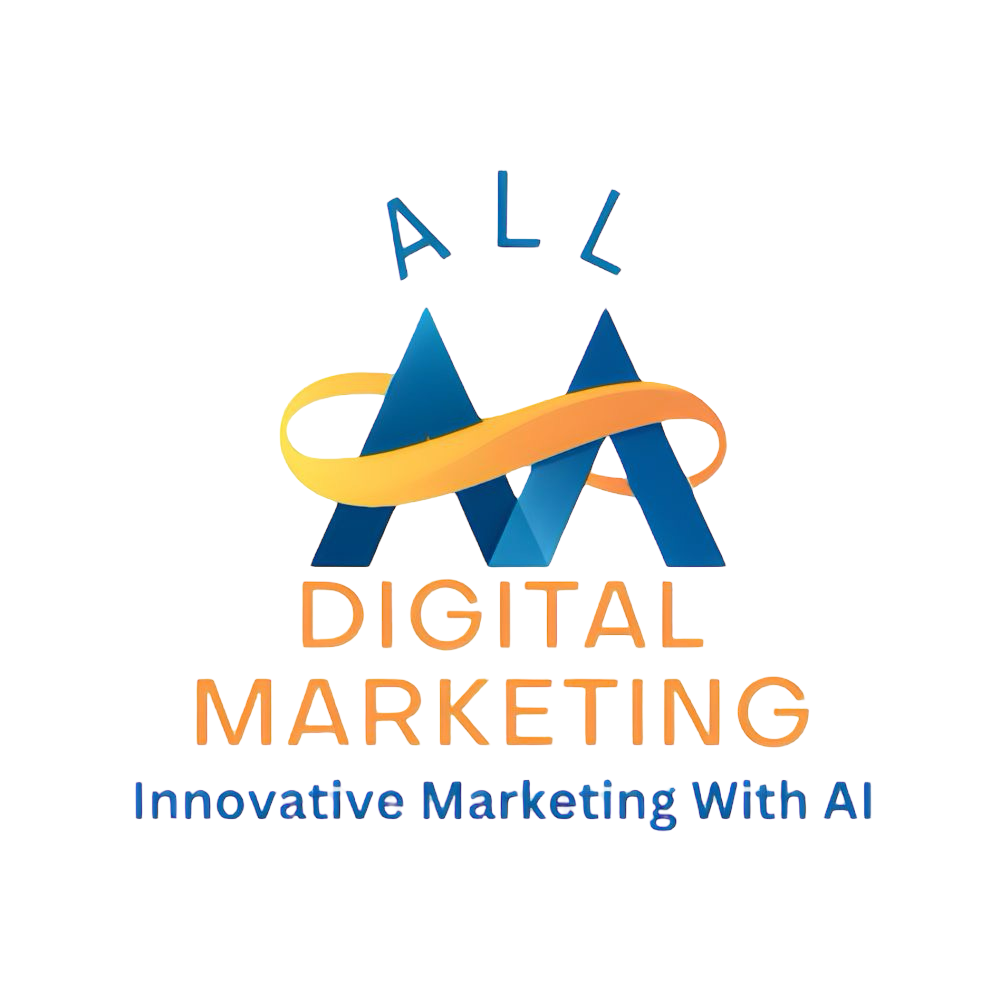Did you know that 93% of top-performing businesses credit content marketing as a critical driver of growth—yet less than 40% have a documented strategy? If you’ve ever felt overwhelmed, stuck, or skeptical of whether your content will actually make a difference, you’re not alone. Many brands pour energy into blog posts, social media, and email marketing, only to be met with lackluster engagement and unclear ROI. But here’s the twist—this challenge isn’t a sign to give up; it’s a chance to rethink. Today, we’ll pull back the curtain on what actually works in content marketing, breaking down frameworks, sharing vivid real-world stories, and giving you practical steps to finally make your brand stand out.Key Takeaways: What You'll Learn About Content MarketingThe fundamentals of content marketing demystifiedProven frameworks and techniques used by leading content marketersApplication-ready content strategy examples and templatesMistakes to avoid for rapid brand awareness and engagementHow to create, distribute, and measure effective blog post, white paper, and video contentStrategies to amplify your marketing strategy with real industry success storiesUnlocking the Power of Content Marketing: A Surprising Truth"93% of top-performing businesses credit content marketing as a critical driver of growth—yet less than 40% have a documented strategy."Many businesses invest in content marketing hoping for a surge in brand awareness, leads, and revenue. Yet, most struggle because they treat content as a checkbox, not a well-planned system. Content marketing isn’t about producing more—it’s about delivering value, consistently and strategically.For example, imagine two companies. The first posts randomly—some blog posts here, a social media graphic there. Results are disappointing and unpredictable. The second, however, has a content marketing strategy: they map their blog posts and white papers to common pain points, repurpose video content for social media, and analyze what engages their audience. In less than a year, they earn loyal fans, expand brand awareness, and outpace competitors. That’s the power of a proper content marketing approach: less guesswork, more results.When you unlock content marketing’s potential with frameworks like the 5 C’s, the 70-20-10 rule, and insight-driven content creation, you lay the groundwork for long-term growth. Content marketers who adopt these methods become trusted voices—thought leaders who drive business and make a measurable impact.As you refine your approach to content marketing, it’s also worth exploring how top marketers transform fleeting social media posts into lasting brand assets. By understanding the strategies behind sustained engagement, you can amplify the impact of your own content across platforms. For a deeper dive into these tactics, check out how leading brands turn social media moments into long-term success.What is Content Marketing? Defining the PracticeA Storytelling Approach: Understanding Content MarketingAt its core, content marketing is the art and science of creating, curating, and distributing valuable, relevant media content to attract, educate, and retain your audience. Unlike traditional marketing, which often interrupts, content marketing invites—with storytelling at its heart.Think of it as building a relationship with your audience. Each blog post, white paper, or video content piece is less about a direct sales pitch and more about solving a pain point, answering a question, or inspiring a new idea. For example, a thought leader in digital marketing might publish regular blog posts that break down new trends, industry changes, or innovative strategies—not to sell directly, but to earn trust and loyalty.This storytelling approach creates an ongoing dialogue between your brand and your audience. Over time, brands that consistently provide quality content become go-to resources—the voices people trust when they’re ready to buy or share.Content Marketing Versus Traditional Marketing StrategiesTraditional marketing strategies often rely heavily on direct advertising methods: TV/radio spots, print ads, billboards, and pop-ups. These tend to push a product or service directly, hoping to drive sales through attention and repetition. While effective for quick bursts, traditional marketing doesn’t always foster deep engagement.Content marketing, on the other hand, is inbound. Instead of chasing customers, you attract and retain them with valuable content in the form of blog posts, social media content, white papers, and more. Audiences engage with and seek out brands offering meaningful insights and solutions. Just look at how brands leverage social media posts and blog content to teach, entertain, and encourage dialogue.This shift is why so many marketing strategies now center around media content and ongoing digital engagement—not just fleeting impressions, but sustained relationships.The Foundation: The 5 C's and 3 C's of Content MarketingExploring the 5 C's of Content MarketingClarityConsistencyCreativityCustomer FocusConversionThe 5 C’s of content marketing create a foundation for any successful strategy. Clarity is about delivering a focused message—audiences should instantly grasp what you offer and why it matters. Consistency ensures your brand’s story is uniform across blog posts, social media, and white papers; when messaging shifts, confusion (and loss of trust) follows. Creativity breathes life into your content, making your approach, brand voice, and media content stand out in a crowded landscape.Customer Focus is crucial: high-performing content marketers address specific pain points and answer real questions. Finally, Conversion links your efforts to concrete outcomes—each piece of content should ultimately nudge readers toward a desired action, whether downloading a white paper, subscribing to a blog, or sharing your social media post.Comparing: The 3 C's of Content MarketingContentContextCommunicationIn parallel, some content marketers prefer the simplicity of the 3 C’s framework: Content, Context, and Communication. Content is what you create: articles, blog posts, media content, and videos. Context means delivering the right message, at the right time, through the right format—tailoring blog posts to audience stages, for example. Communication is your ongoing, two-way dialogue with your community, built on trust and authenticity.A great example is a brand launching a new product: they publish blog posts educating their audience, share social media posts highlighting user feedback, and send email marketing updates—each message timed and tailored for maximum relevance. The blend of the 5 C’s and 3 C’s turns disjointed campaigns into cohesive marketing strategies that resonate.The 70-20-10 Rule in Content Marketing ExplainedTypeDescriptionProportionCore ContentEvergreen, consistent messaging70%Experimental ContentNew approaches, audience engagement20%Promotional ContentBrand-focused, offers10%The 70-20-10 rule is a simple, actionable model for structuring your content marketing efforts. 70% of your content should be core, evergreen material: these are authoritative blog posts, how-to guides, or cornerstone white papers that consistently drive organic search engine traffic. 20% is for experimenting—think of innovative media content or new blog post formats that invite engagement. The final 10% goes to direct promotion, like exclusive social media posts or email blasts focused on your brand or offers.This balance keeps your marketing strategy both stable and dynamic. Blog posts provide long-term traffic; creative video content piques curiosity and encourages shares; while focused promotional pushes turn engaged users into leads and customers.Building Your Content Marketing Strategy Step-by-StepContent Creation: Foundation of Every Successful Content Marketing StrategyContent creation is where your marketing strategy becomes reality. This isn’t just about writing a blog post or filming a quick video. It’s about identifying the unique voice and expertise your brand offers—and sharing it in ways that truly help your audience. Great content marketers start by uncovering pain points and common questions within their industry, then create material (blog posts, videos, white papers) that addresses those directly.Take, for example, an e-commerce brand creating content not only about their products but about challenges their customers face. This could mean developing a video series answering FAQs, writing a white paper comparing products, or launching a blog with user-generated stories. The goal is always to maintain quality content that builds trust and authority while laying a foundation for SEO and social media success.Identifying Your Audience and Pinpointing Their NeedsEffective content marketing starts with a clear picture of who you’re speaking to. Identifying your audience involves researching demographics, interests, pain points, and buying habits. Leading brands develop detailed audience personas and use analytics to refine these insights.For instance, a SaaS company may discover through feedback and analytics that its users are confused about integrations. By tailoring blog posts, white papers, and video content around these topics, they become an essential resource. Top content marketers constantly align content creation with what the audience actually needs, versus what the company wants to say, ensuring every media content investment is purpose-driven.Mapping Your Content Strategy to the Buyer's JourneyTo maximize impact, match each piece of content to where your prospect is on the buyer’s journey. In the awareness stage, blog posts and social media content highlight challenges and introduce solutions. As the prospect moves to the consideration stage, white papers offer deep dives, while video content provides product demonstrations or testimonials. For the decision stage, offer case studies, comparisons, or exclusive social media posts prompting action.Imagine a customer discovering your brand on Instagram, following a link to a topical blog post, downloading a white paper for more details, and finally requesting a demo after reading a case study. Each piece is strategically placed, fostering engagement and, ultimately, conversion.Selecting Formats: Blog Posts, White Papers, Video Content, and MoreBlog Post Best Practices and High-Performing ExamplesThe blog post remains one of the most versatile content marketing assets. Start with an attention-grabbing headline, use clear subheadings, and incorporate SEO-friendly keywords naturally. Effective blog posts aren’t just informative—they’re actionable. Always end with a call-to-action, invite feedback, and provide internal links for further reading.Consider HubSpot’s blog: every post breaks down complex marketing strategies into plain language, uses engaging visuals, and ends with helpful resources. For your brand, analyze what blog posts drive the most traffic and shares, then double down on those topics and formats. Repurpose blog content into social media posts, infographics, or even short explanatory videos to maximize reach.Creating Compelling White Papers for Lead GenerationWhite papers are content marketing’s heavy hitters: data-driven, thoroughly researched, and designed to position your brand as a thought leader. They work best for B2B brands or when educating audiences on complex buying decisions. Strong white papers are visually engaging, concise yet comprehensive, and packed with actionable insights.For example, Salesforce regularly publishes white papers comparing CRM best practices, spotlighting industry surveys, and offering unique frameworks. Gating white papers behind lead capture forms is a proven method for generating high-quality leads—just be sure your content delivers on expectations, or you’ll lose trust fast.Engaging Audiences With Video Content and Social Media ContentVideo content is exploding in popularity—not just because it’s visually engaging, but because it’s highly shareable on social media. Quick explainers, behind-the-scenes tours, and animated infographics all help demystify complex topics, making information more accessible. Brands are now launching YouTube channels, Instagram Reels, and TikTok campaigns to tell their stories in new ways.Social media content should be optimized for the platform—snappy for TikTok, visual for Instagram, conversational for Twitter. Always encourage interaction: questions, polls, live videos, and user-generated campaigns drive brand awareness and foster a sense of community.Repurposing Media Content Across PlatformsOne trait of successful content marketers is their ability to repurpose media content. A single white paper can fuel a dozen blog posts, infographics, or clips for social media marketing. Recording a podcast? Turn key insights into quote graphics or LinkedIn articles. Top performers extract the maximum value from every idea, ensuring their marketing strategy is both efficient and omnipresent.This approach not only saves time but also enforces consistency and clarity—the hallmarks of effective content marketing. It’s how small teams punch above their weight and maintain a steady brand presence.Amplifying Content Marketing with Social Media Marketing and Email MarketingLeveraging Social Media Posts for Brand AwarenessSocial media marketing is, for many brands, the fastest track to brand awareness. A well-timed social media post can reach thousands—even millions—far beyond your current audience. Consistent posting, interactive features (like stories and polls), and real-time engagement build recognition and trust.Look at Wendy’s or Duolingo on Twitter: their witty, proactive social media content has made them internet icons. But it’s not about being everywhere; it’s about being where your audience is and providing real value. Share your blog posts, short video content, and user stories to amplify your marketing strategy.Driving Traffic with Media Marketing—Successful Industry ExamplesMultiple brands have transformed dull outreach into booming web visits through media marketing. Take Glossier, whose blog “Into The Gloss” combined beauty content, user testimonials, and product stories to build a cult-like audience—before the products even hit shelves. Or Buffer, which used transparent, data-rich blog posts and in-depth case studies to grow their SaaS brand with minimal ad spend.Successful content marketers know the secret isn’t just producing media content, but distributing it strategically—leveraging partnerships, influencer posts, and email marketing campaigns to ensure their message reaches the right eyes.Nurturing Leads with Email Marketing and Automated MessagingEmail marketing is far from outdated—in fact, it’s one of the best tools to turn prospects into loyal customers. Automated welcome sequences, regular newsletters, and tailored lead-nurturing workflows keep your brand top-of-mind while building relationships.For instance, an e-learning brand might automate a weekly tips newsletter, send exclusive white papers to engaged segments, and invite blog post feedback via surveys. Each touchpoint is a chance to reinforce value and encourage the next conversion.Measuring and Refining Your Content Marketing StrategyKey Metrics for Evaluating Content Marketing PerformanceTraffic and engagement dataConversion ratesLead volume and qualityBrand awareness growth metricsHow do you know your efforts are working? Top content marketers rely on a blend of metrics—website traffic, social media shares, time-on-page, and email open rates paint a picture of overall engagement. Conversion rates (for blog post CTAs, white paper downloads, video signups) connect effort to outcome. Lead volume and quality are key gauges of whether your strategy is truly attracting and retaining the right audience. Finally, track changes in brand awareness through mentions, branded search volume, and share of voice.Regularly reviewing this data sharpens your marketing strategy—revealing which blog posts perform, which social media content resonates, and where to repurpose or revisit your media content investments.Iterating for Success: Lessons from High-Performing Content MarketersContent marketing isn’t a one-and-done effort—it’s an ongoing experiment. Brands like Moz and Canva iterate constantly: they update old blog posts, test new content types, and refresh landing pages based on what the data tells them. High-performing content marketers treat marketing strategy as a living process, always learning from what works (and what doesn’t).For example, after a drop in engagement, Canva analyzed which media content underperformed, repurposed popular social media content into new formats, and doubled down on interactive blog posts. The result? A dramatic upswing in both traffic and conversions.Real-World Applications: Content Marketing Success StoriesHow a Brand Leveraged Content Marketing to Double RevenueLet’s zoom in on a real transformation: A mid-sized technology company struggling to gain traction in a saturated market. They invested in a comprehensive content marketing strategy—launching weekly blog posts, insightful white papers, and an engaging video series targeting their ideal customer’s biggest challenges.By promoting this media content across social media marketing and nurturing leads through email marketing, the brand saw a 2x jump in inbound leads within 12 months. Their reputation shifted; industry blogs began featuring them as thought leaders. Most importantly, conversion rates soared, pushing revenue to double year-over-year. It’s not a magic bullet—it’s a commitment to quality content, managed with intent.From Start-up to Industry Leader: A Social Media Content Case StudyA local fitness start-up knew they couldn’t outspend established gyms, but they could outshare. They created weekly video content packed with motivating stories from real clients, filmed behind-the-scenes workouts, and published energizing social media content that celebrated small wins.Their social media marketing quickly went viral within the community. Local news, influencers, and industry sites picked up their stories, multiplying reach. Two years later, their brand awareness dominated the region—not because they shouted the loudest, but because they shared the most relatable, high-quality content. This approach built an emotional connection that grew membership, revenue, and reputation all at once.People Also Ask: Frequently Asked Questions on Content MarketingWhat is content marketing?Content marketing is the strategic creation and sharing of valuable, relevant media content (including blog posts, white papers, social media content, and more) to attract, educate, and retain your target audience, driving brand awareness and business growth.What are the 5 C's of content marketing?The 5 C's of content marketing are Clarity, Consistency, Creativity, Customer Focus, and Conversion. These pillars help content marketers build more focused and effective marketing strategies.What are the 3 C's of content marketing?The 3 C's of content marketing are Content, Context, and Communication. Integrating these ensures your media marketing strategy resonates with audiences and achieves organizational goals.What is the 70 20 10 rule in content marketing?The 70-20-10 rule in content marketing suggests that 70% of content should be foundational, 20% innovative, and 10% promotional, ensuring variety and sustained engagement.Your Next Step: Activate Your Content Marketing Success"Great content marketing doesn't just inform—it inspires and drives audiences to action."Ready to see real results? I hope you enjoyed reading our blog. If you would like assistance with your marketing, give us a call at 207-710-1449 or visit our website at www.digitalmarketingall.org.If you’re eager to take your content marketing to the next level, consider how advanced digital strategies can further accelerate your growth. Leveraging tools like predictive analytics can help you anticipate audience needs, personalize your messaging, and boost sales with data-driven precision. To discover how these innovative techniques can transform your marketing outcomes, explore our guide on unlocking the power of predictive analytics in digital marketing. Embracing these insights will empower you to stay ahead of the curve and achieve measurable, lasting results.To deepen your understanding of content marketing and its strategic implementation, consider exploring the following resources: “Content Marketing: The Ultimate Guide” (forbes.com) This comprehensive guide delves into the fundamentals of content marketing, offering insights into various channels such as social media, blogs, and videos. It emphasizes the importance of building brand trust and engagement through valuable content. “What Is Content Marketing?” (salesforce.com) This resource provides a clear definition of content marketing, highlighting its role in creating and sharing relevant content to attract and build trust with target audiences. It also discusses the distinction between content marketing and content promotion. By exploring these resources, you’ll gain a deeper understanding of content marketing strategies and how to effectively implement them to enhance your brand’s presence and engagement.
 Add Row
Add Row  Add
Add 








Write A Comment